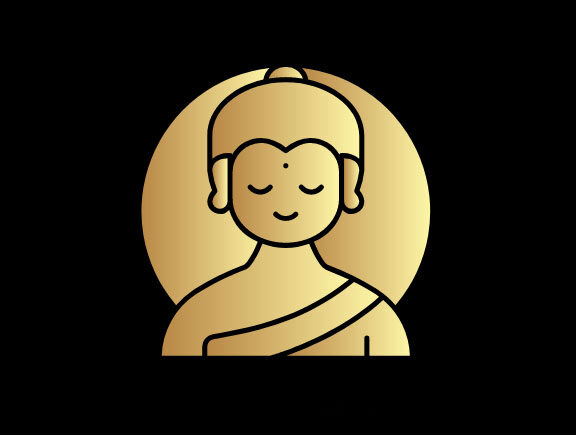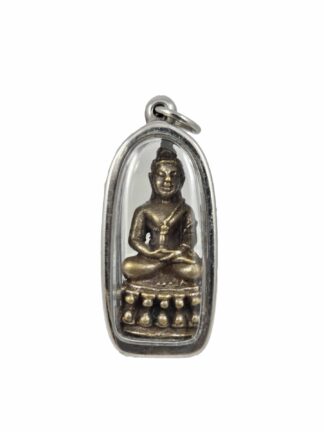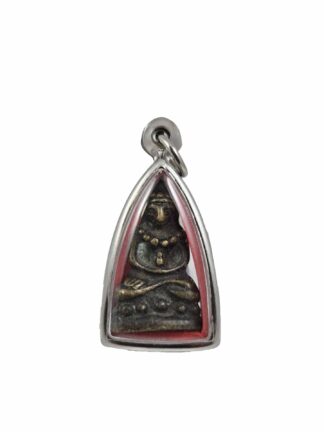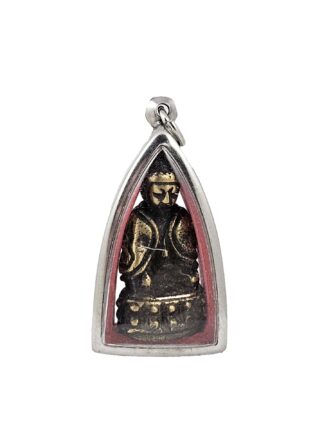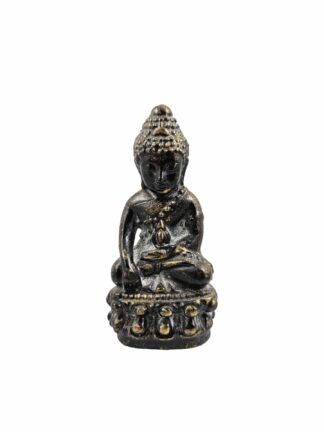Phra Kring
Phra Kring was made as a Bhaisajyaguru’s image. Phra Kring Yai (large amulet mould) originated in China. It is the only prominent Phra Kring mould made outside of Thailand that is popular in the amulet community. Phra Kring’s image was first shown around 1400 B.E., and it became the archetype since then. Its image typically depicts it sitting on a two-layer lotus base with seven petals each. Its name derives from the “Kling” sound that it produces when shaken. It is a common belief that hearing the ringing sound could bring good luck and harmony, thus improving one’s overall spiritual health. The ringing sound will reverberate to the Medicine Buddha, and he will bless and protect the user from all dangers.
The Buddha’s image is closely associated with other Buddha artistry from Cambodia and China. In Thai, Phra Kring means “Ringing Buddha,” and it is pronounced similarly to its English counterpart “, ring,” which derives from the sound of the ringing bell. Phra Kring’s hollow body contains a ball bearing that produces a ringing sound when shaken. The intention is to make one relate to the critical characteristics of the three marks of existence in Buddhism: impermanence(anicca), suffering(dukkha), and non-self(anattā). Currently, Phra Kring’s “Pawares” from Wat Suthat has the most value and are highly prized by collectors.
Showing all 21 results
-

Phra Kring
$221 Add to cart -

Phra Kring
$184 Add to cart -

Phra Kring
$1,108 Add to cart -

Phra Kring
$443 Add to cart -

Phra Kring
$738 Add to cart -

Phra Kring
$1,108 Add to cart -

Phra Kring
$354 Add to cart -

Phra Kring
$2,218 Add to cart -

Phra Kring
$664 Add to cart -

Phra Kring
$738 Add to cart -

Phra Kring
$664 Add to cart -

Phra Kring
$221 Add to cart -

Phra Kring
$221 Add to cart -

Phra Kring
$369 Add to cart -

Phra Kring
$369 Add to cart -

Phra Kring Statue
$1,108 Add to cart -

Phra Kring Statue
$627 Add to cart -

Phra Kring Statue
$369 Add to cart -

Phra Kring Statue
$369 Add to cart -

Phra Kring Statue
$369 Add to cart -

Phra Kring Statue
$221 Add to cart
Showing all 21 results
